Introduction
Tent Types
Pole-Supported Tents
A tent that features a set of individual poles arranged beneath the fabric roof to support and define the shape of the structure. The fabric roof is tensioned over the poles and attached to ropes and/or cables at designated spots around the fabric’s edges. The ropes/cables are anchored to the ground using stakes, augers or weights around the perimeter of the tent. Pole-supported tents are the grandfather of the tent industry and were once the only type of tent available. Though they have lost ground to newer designs, pole-supported tents remain popular in the United States and are still considered an important part of most tent rental inventories.
Pipe Frame-Supported
A tent with an assembled framework made of aluminum or steel pipes that supports the fabric roof and defines the shape of the structure. The rigid framework allows the tent to be free standing without additional support, but requires the same rope or cable anchoring system as a pole-supported tent to hold it in place, as specified by applicable fire or building codes. Pipe frame-supported tents are popular for events that require smaller tents. Most manufacturers make units as small as 10 feet by 10 feet that are easy to set up and tear down. They are also suitable for smaller events that require few, if any interior obstruction since the frame system makes interior supports unnecessary. Pipe frame-supported tents are available in a wide variety of styles and sizes.
Clearspan
A type of tent that features an assembled framework of box beam (or I-beam) arches that support the fabric roof and define the shape of the structure in much the same way as a pipe frame-supported tent. The stronger construction of the aluminum or steelbox-beam frame makes these tents suitable for larger or longer-term applications than other types of tents. The box-beam framework also allows for large areas of unobstructed “clear span” space beneath the fabric roof. The larger structures require heavy equipment because of the size and weight of their parts. Popular in Europe, these tents come in widths ranging from 40-200 feet wide.
Tensile Tent
A type of tent that shares some characteristics with the pole-supported tent, but which relies more on the tensioning of the fabric roof for its structural integrity and shape. The use of tensioned fabric to resist applied loads and shape the fabric membrane means less of a traditional support structure is needed to maintain it. One of the more modern tent designs, tensile tents tend to be more curvilinear and sculpted in appearance than traditional tents. This type of tent can be mass-produced or custom-designed as needed.
Tent Uses

Corporate Events
Here, companies take advantage of the sophistication and distinct look of a tent structure to house or decorate their corporate event.

Emergency Relief
In midst of destruction and instability, these manufacturers create a safe haven for those in need.

Fairs & Festivals
The fun of a ferris wheel can only be balanced with the delicious food and games of skill hidden in tents decorated with stripes and ribbon.

Hotels & Resorts
Exotic palms only shade so much; some canopies, awnings and tents can alleviate the sun’s heat from overtaking a vacation.

Sporting Events
From the goal to the starting line-up, the variety of structures created for sporting events always exceeds expectations.

Warehousing
Store supplies, equipment or old memories in these multifunctional tents that aid in keeping all necessities clean, safe and dry.

Weddings
Dazzling, enchanting and beautiful ceremonies and receptions covered by creations that are as unique and special as the couple.
Become a Member
Become a member of the Advanced Textiles Association.
Gain access to our member group focused on the commercial tent rental industry.
Be informed, get recognized, stay connected, and much more.
Questions?
Questions?
For more information, or website accessibility questions, contact: Jill Newman, Education & Events Manager | 651-225-6953 | jill.newman@textiles.org











